Technical notes
Ropes
Ropes can be in single stranding (spiral wire ropes) and in multiple stranding (stranded ropes).
A spiral wire rope consists of one or several layers of wires which are wound helically round a core wire. Spiral wire ropes are well suited as clamping and supporting element.
A stranded rope consists of one or several layers of strands. The strands are helically wound round a core. This core can either be a fibre core or a core of stranded wires (steel core). Stranded ropes are used principally for dynamic and mechanical strain.
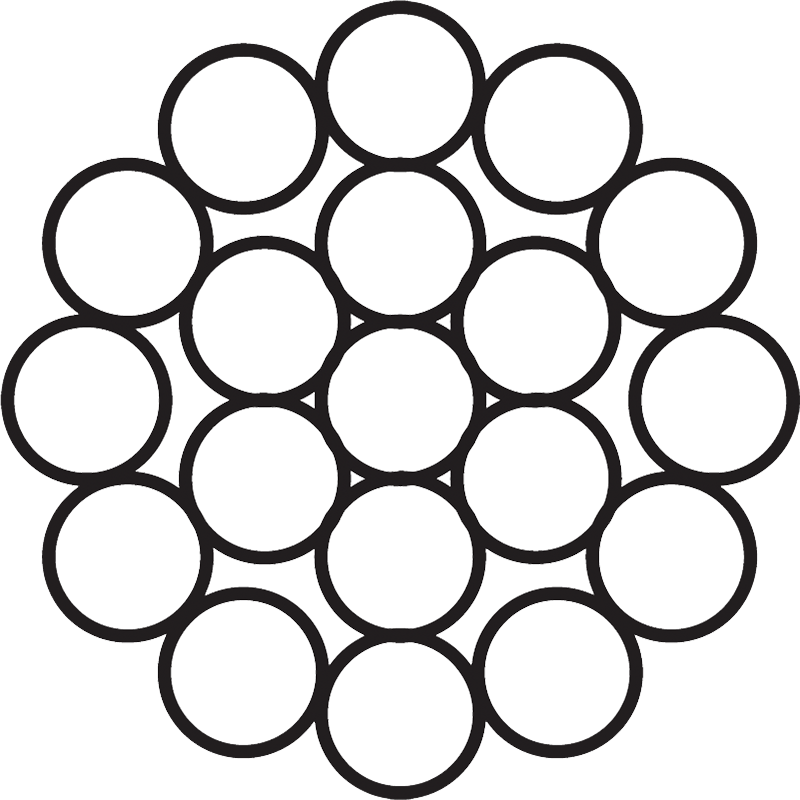
Spiral wire rope
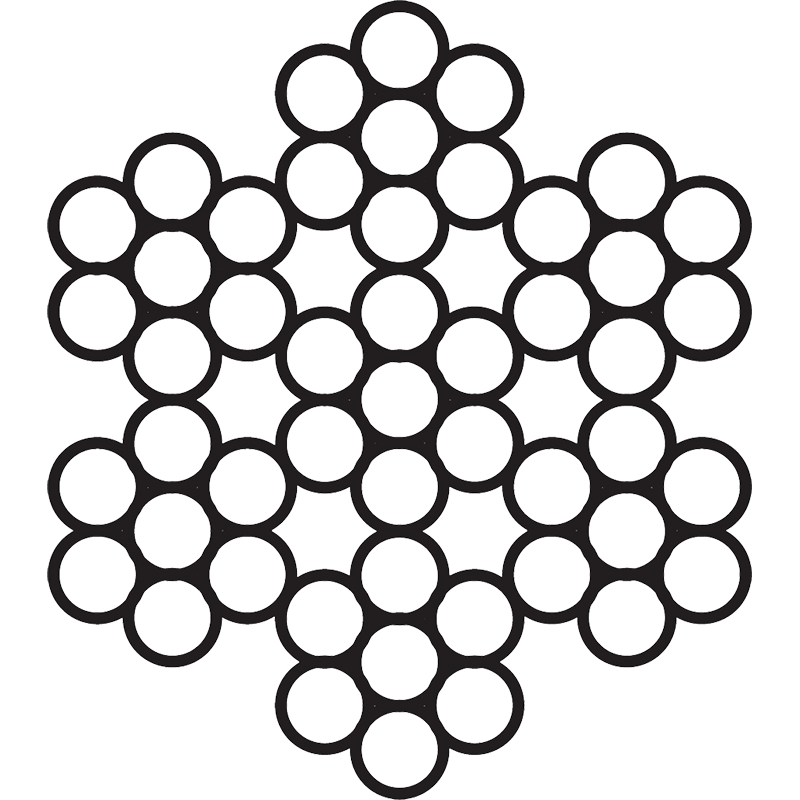
Stranded rope
Construction of ropes
Ropes and stranded ropes are described as follows:
(number of strands) x (number of wires per strand). If a cable with a fiber core is used, the designation FC is added.

Spiral wire rope 1 x 19

Spiral wire rope with a wire strand core 6 x 7 - WSC
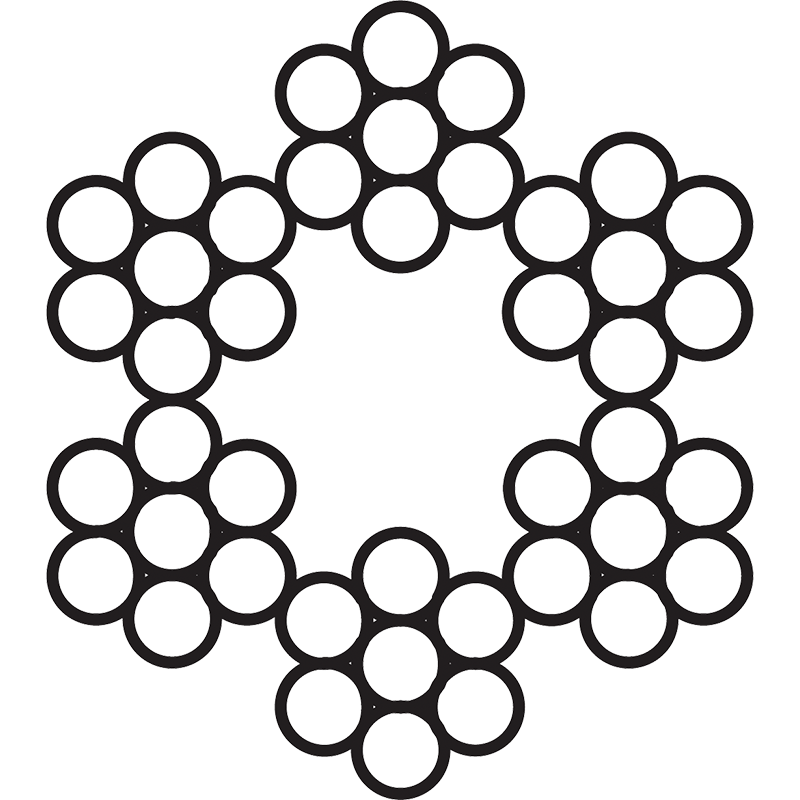
Spiral wire rope with a fibre core 6 x 7 - FC
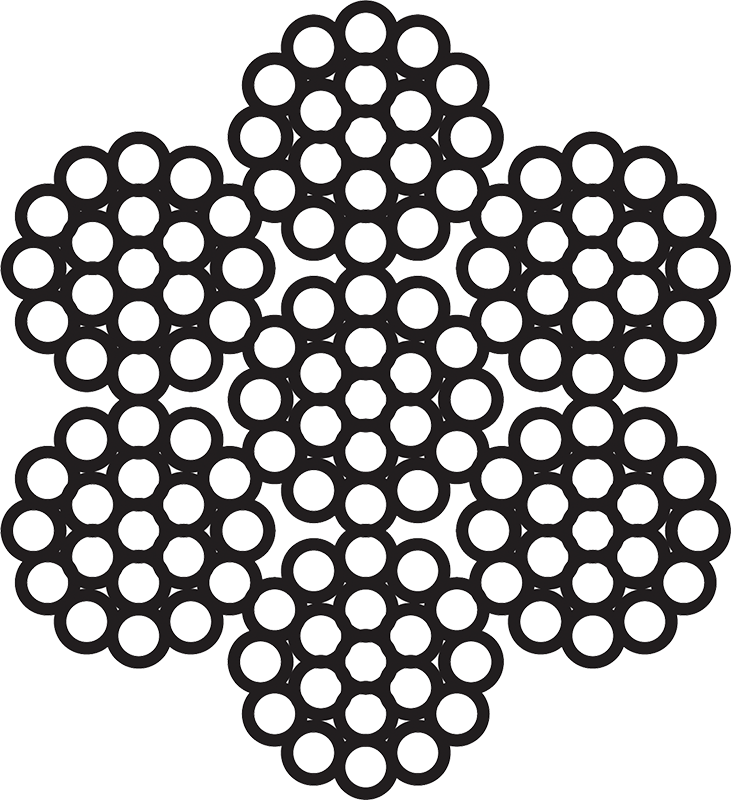
Spiral wire rope with a wire strand core 6 x 19 - WSC
E.g. the designation 6 x 7 - WSC describes a wire rope consisting of 6 strands. An individual strand contains 7 wires and the wire strand core has 1 x 7, i.e. a total of 49 wires.
Type of lay
The direction of lay of a rope is the direction of the helical line of the outer strands. Wire ropes are available in right-hand lay and in left-hand lay. By default and unless otherwise indicated, ordinary lay right uses.
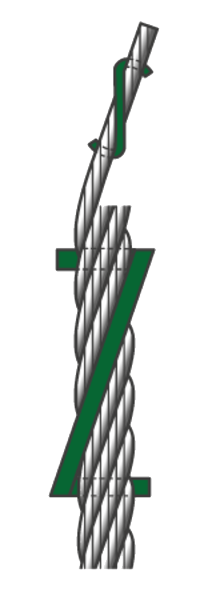
Ordinary lay, right EN-symbol „sZ“
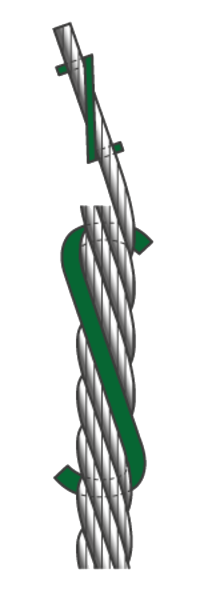
Ordinary lay, left EN-symbol „zS“
Deflections
The following minimum roll diameter guarantee maximum lifetime for stranded ropes. Spiral ropes are not suitable for diversion.
Recommended minimum diameter of the rollers:
| Cable construction | Rolls- Ø |
|---|---|
| 1x19 | not suitable |
| 6x7 WSC | 42 x Seil Ø |
| 6x19 WSC | 25 x Seil Ø |
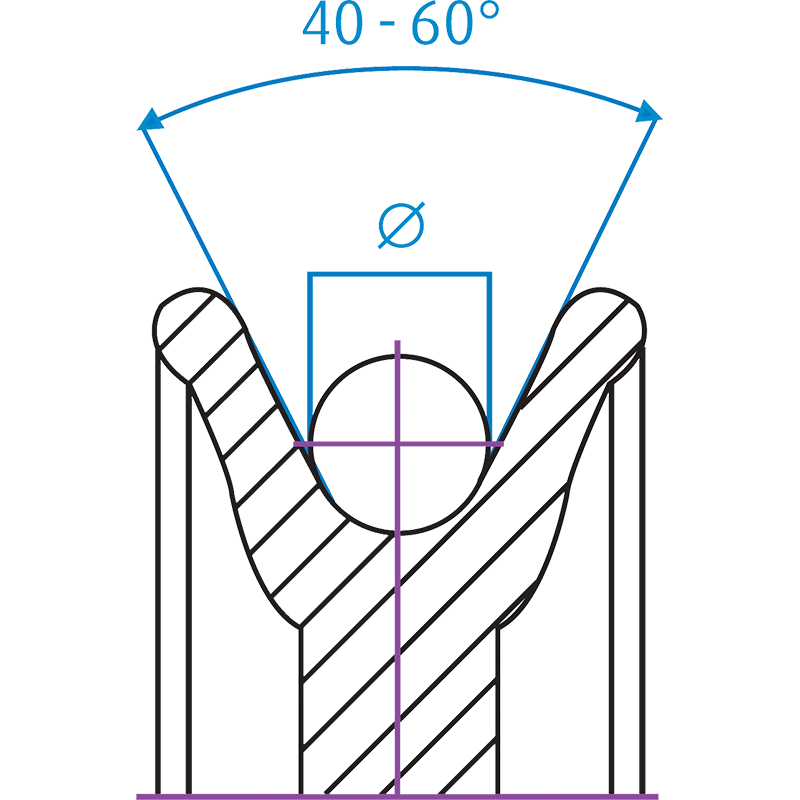
Linear expansion
A distinction is made between two types of stretching: Material-related and design-related stretching.
Material expansion
A wire stretches when under load, and returns approximately to its original state after the load is removed. If a wire is loaded beyond its deformation point (elastic limit) it will remain the stretched state, which leads to premature wire breaks, especially when mechanically stressed.
Design-related stretching
The process of stranding the individual wires creates interstices which close during the first loading. This causes a larger or smaller amount of stretching depending on the design.
Sheating
Sheathed cables should be used when they run over guide rollers or are subjected to flexural stresses. Sheathing wire cables with plastic protects the cable from dirt, and the oil film applied during the stranding process remains on the cable. The oil film acts as a lubricant between the individual wires and strands, reduces wear, and increases the lifetime by up to 50 %. We use transparent or black polyamide as standard. However, sheathing with other plastics is also possible.
Working life
The working life of a wire rope depends primarily on the following points:
- Cable construction
- By deflection roll diameter
- Sheating
- Percentage load of min. breaking force
- Rope lubrication
In order to be able to determine the service life more accurately, we also offer you endurance tests, as well as our friction-optimized, grease-free innovative Opatech Bowden cables and push-pull cables .
